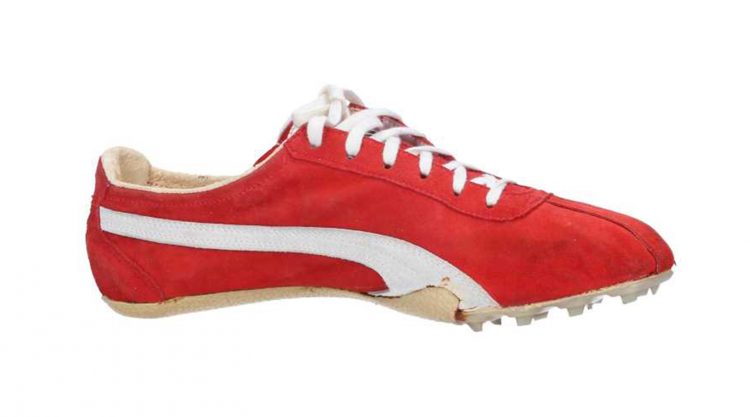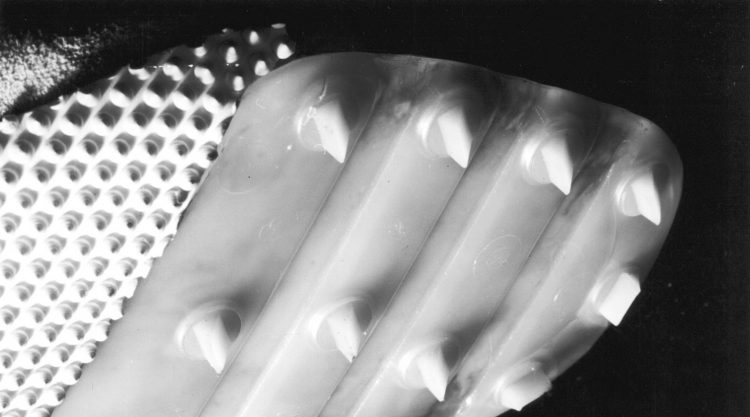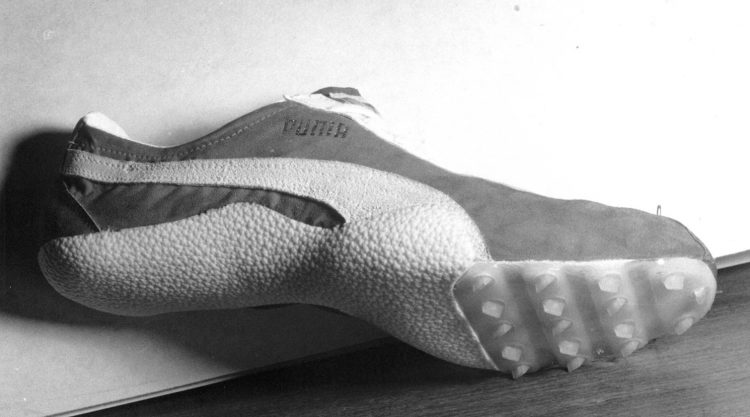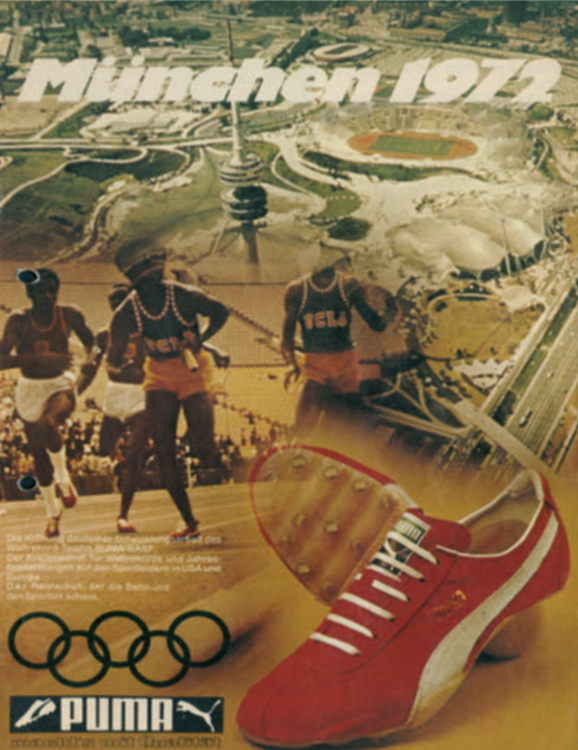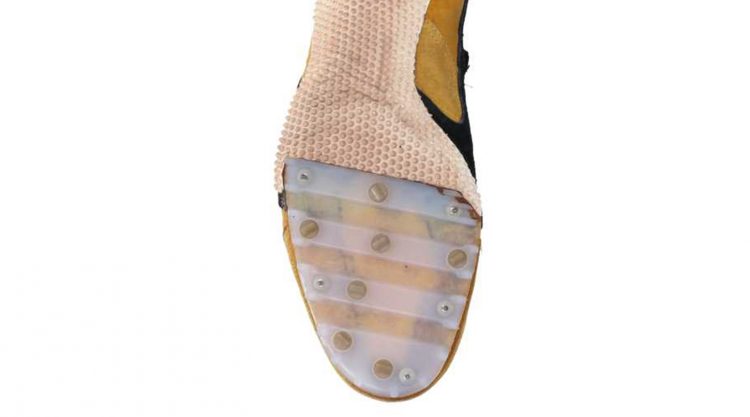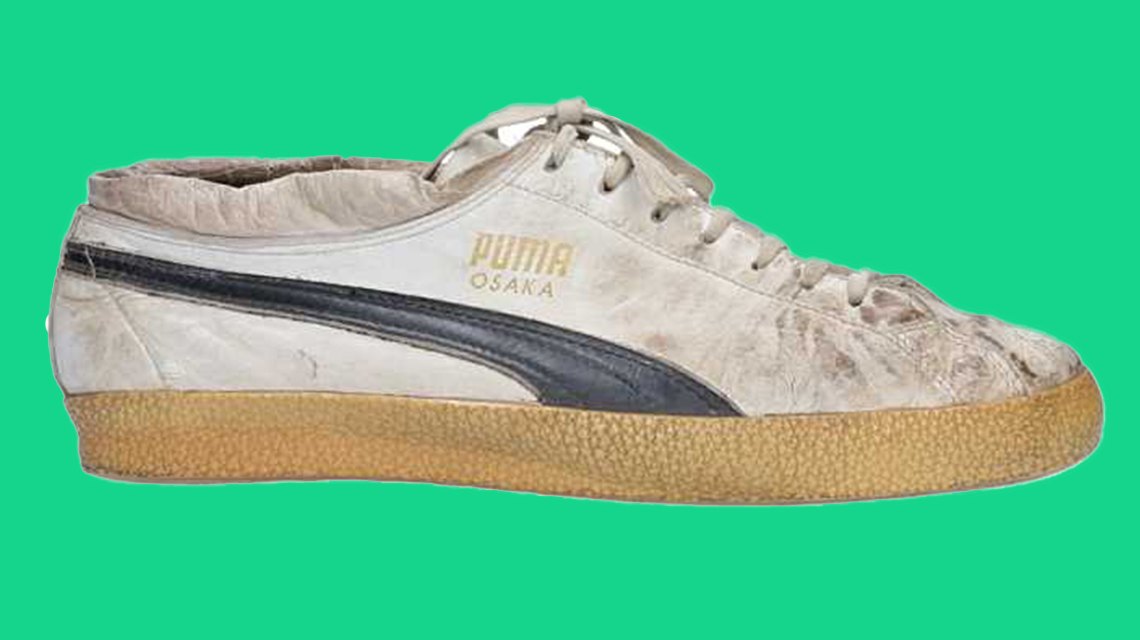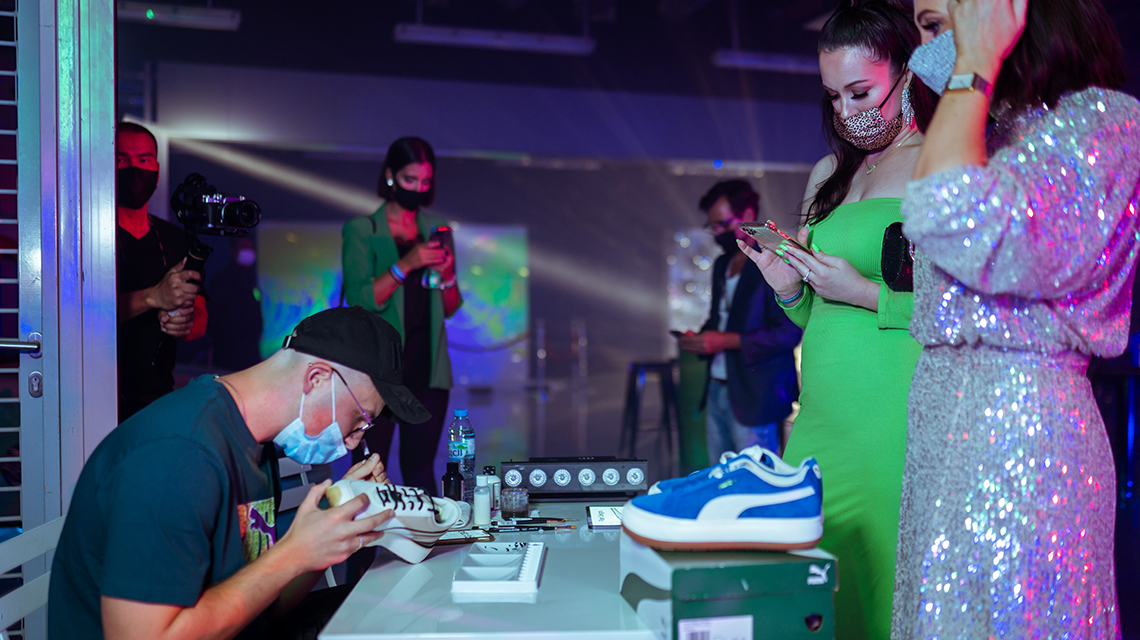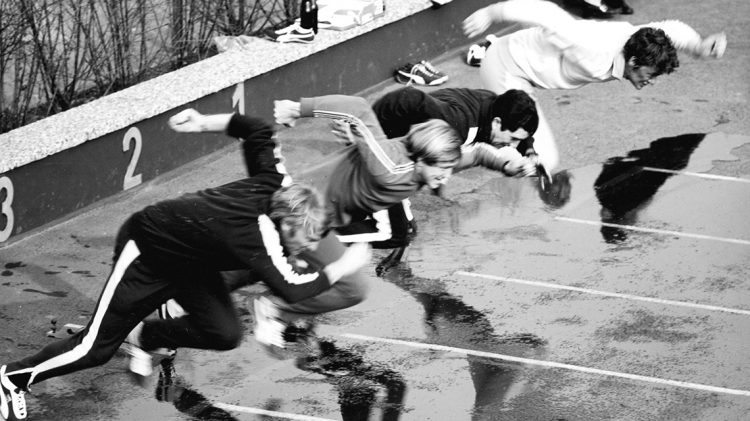 PUMA Archive
PUMA Archive
When PUMA
showed its claws
The history of PUMA’s Claw Shoe
May 17, 2022The history of PUMA’s Claw Shoe
May 17, 2022It’s almost been 50 years! In the summer of 1972, the entire sporting world looked to Munich, where the Olympic Games were taking place. But not only fans and athletes were looking forward to the event. In this article, we want to look back and highlight an innovation that was introduced at the Games – the PUMA Claw Shoe. These running shoes were developed in collaboration with the multinational chemical company BASF.
FIRST WAS THE “TAHOE” BRUSH SPIKE
Four years earlier, in the run-up to the Olympic Games in Mexico City, PUMA had released a special performance shoe: the “Brush Spike” shoe called TAHOE. The reason for this new development was that the running competitions at the 1968 Summer Olympics were held on synthetic tracks (tartan tracks) for the first time. The TAHOE was not only the first sports shoe with a Velcro fastener, but also had 68 spikes arranged in rows in the front part of the sole. Although these spikes are only four millimetres long, they provided much better traction on the new synthetic tracks.
We sent a collection of the shoes to the US runners’ training camp and the results were impressive: not only did the runners immediately feel comfortable with the shoe, but they also broke several world records in them. However, the IAAF (International Association of Athletics Federations) debated whether the thin needles of the brush shoe could be considered spikes. According to the IAAF rules at the time – which still apply today – running shoes with more than eleven spikes were not allowed. The short metal spikes were assessed and considered as spikes, which led to the shoe being banned before the start of the Summer Olympics.
The PUMA claw shoe, which was developed in cooperation with BASF, is another milestone in the history of sports footwear.
COOPERATION WITH BASF
In addition to the limited number of spikes, other aspects had to be taken into account when developing suitable running shoes, such as the wear to synthetic tracks caused by the spikes. To find solutions and develop an improved successor to the “Brush Spike” shoe, Armin Dassler initiated a partnership with a proven specialist for plastics: BASF AG. Following analyses by various testing and sporting institutes, such as the Institute for Biomechanics and Orthopaedics at the German Sport University Cologne or the Institute of Physiology at the Johannes Gutenberg University Mainz, an innovative new sole was developed using the BASF plastic Ultramid and, instead of the usual spikes, opposing and offset claws made from Ultramid were integrated into the sole. Once these innovative soles had been made into complete shoes, the first practical tests took place with top athletes such as Joachim Eigenherr, putting the new shoes through their paces.
But how would the new shoes behave in a real race? And how great would the wear and tear be? To find the answers to these questions, BASF approached the AWETA, which, under the lead of engineer Erich Strickle, developed a completely new testing device: the “artificial runner.” Powered with a three-horsepower engine, the “legs” of the device could be operated at continuously adjustable speeds. To record the distance covered by the “artificial runner,” the “track” was designed to be movable. This meant that the shoes could be evaluated when subjected to the different loads that occur during the various athletic disciplines.
For me, after the ban of the legendary PUMA Brush Spike, the PUMA Claw Shoe is another sign of PUMA's strength for new innovations.
MUNICH ´72
After extensive development work, PUMA and BASF presented the “Claw Shoe” – also known as the “München72” – at the ISPO trade fair in Munich on March 11, 1972. The Claw Shoe was successfully used in the German athletics competitions that took place in the run-up to the Olympic Games. According to BASF, the Nigerian Olympic team held their training camp in Hemsbach and took the opportunity to test the claw shoe. The African athletes were positive about the shoe and stated that they would also like to wear it at the Olympic Games.
If the athletes then wore the Claw Shoes in Munich and how this fact influenced their performances can unfortunately not be conclusively clarified.
The following year we had offered the Claw Shoe with the Ultramid spikes under the name “Ottawa”. We had marketed the shoe model until 1985, but over the years metal spikes have been inserted between the claws.
We would like to thank the BASF Corporate History Team for providing content and images for this article.


